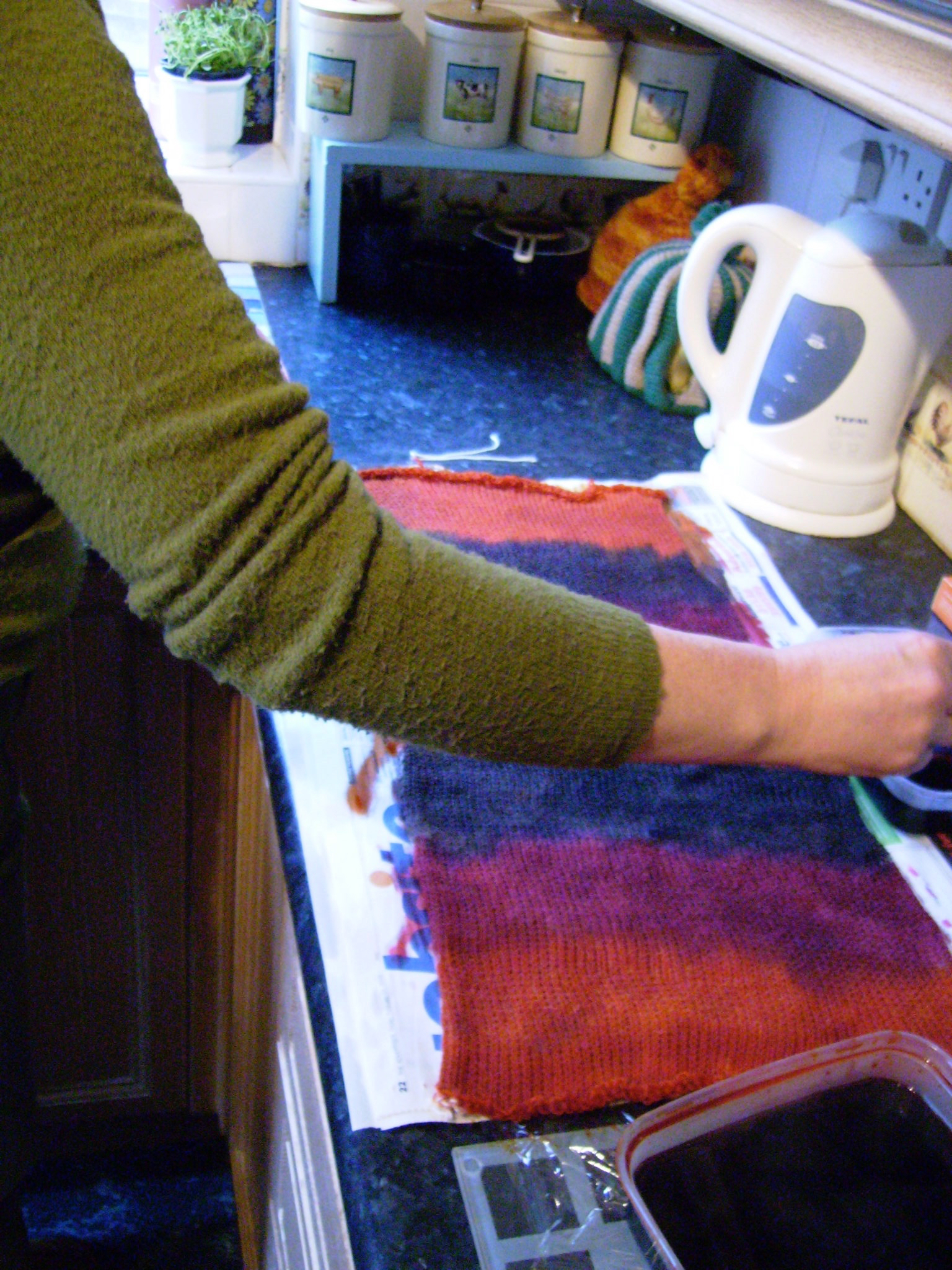|
January 2009.
That's when I first dyed wool. This was when Hilltop Cloud was still a long way off. I'd bought a kit for Mum for Christmas, and we had a go at dyeing a sock blank in our kitchen. So for today, I'm going to say have a go at dyeing. It is great fun, and a lovely way to transform the colour of some yarn that you don't like, or to experiment in some undyed yarn. Acid dyes are now incredibly safe and have low toxicity. They are certainly safer than many natural dyes which can be poisonous, carcinogenic, irritants etc. In my opinion, and it is just that, an opinion, I am happier using acid dyes in a domestic setting than I am using natural dyes. Others will disagree... if you like the idea of natural dyeing then the Jenny Dean book, Wild Colour is a great starting point. The acid part in the term acid dye refers to the fact that you need slightly acidic conditions for dye to fix on to the fibres. Most dyers use citric acid (this is the same chemical used in bath bombs, and is what makes lemon juice acidic), splashing it in your eyes will sting, but shouldn't cause any lasting damage. (But at the same time try not to do it, because things in eyes is never a sensible idea!) You can also use vinegar for the same purpose. If you have food colours at home you can use those to dye yarn. This series of blogposts explains how to prepare your yarn, and a variety of methods you can use to fix the colour to the yarn, the microwave is my personal favourite in a home kitchen setting. It's worth saying that dyeing yarn is far less risky than trying to dye fibre, yarn will stand up better to being handled, and you're less likely to felt it. Dyeing fibre is a bit more of a cautious affair, so starting out on yarn teaches you the basics before moving on to fibre. If you do try dyeing at home, read the safety instructions that come with your dyes, they are still chemicals, apply common sense, the same as you would when using household cleaners, or other things that have the potential to cause minor harm. If you don't have food colouring then another fun alternative is to use Kool Aid, this is an American drink powered, where different flavours are different colours. It even has the citric acid already added. You can buy Kool Aid in the UK from DT crafts. I've even done this method in a Youth Hostel kitchen. If Acid Dyes make you twitchy then this is a nice way to get started. Food colouring and Kool Aid are great to play around with, but sometimes it's hard to get the colour you want, and the light fastness, and washability is sometimes not great. If you want a bit more of a professional job then acid dyes are the way to go. This kit from DT Crafts is a great starting point. This post is part of my advent calendar 2016. Every day in December we're saying so long to 2016 by embracing learning, knowledge and creativity. Each day there will be a new post with a new skill or craft. You can read all the past posts here. Comments are closed.
|
Archives
January 2024
Categories
All
|
Hilltop CloudHilltop Cloud- Spin Different
Beautiful fibre you'll love to work with. Established 2011 VAT Reg- 209 4066 19 Dugoed Bach, Mallwyd, Machynlleth,
Powys, SY20 9HR |


 RSS Feed
RSS Feed


